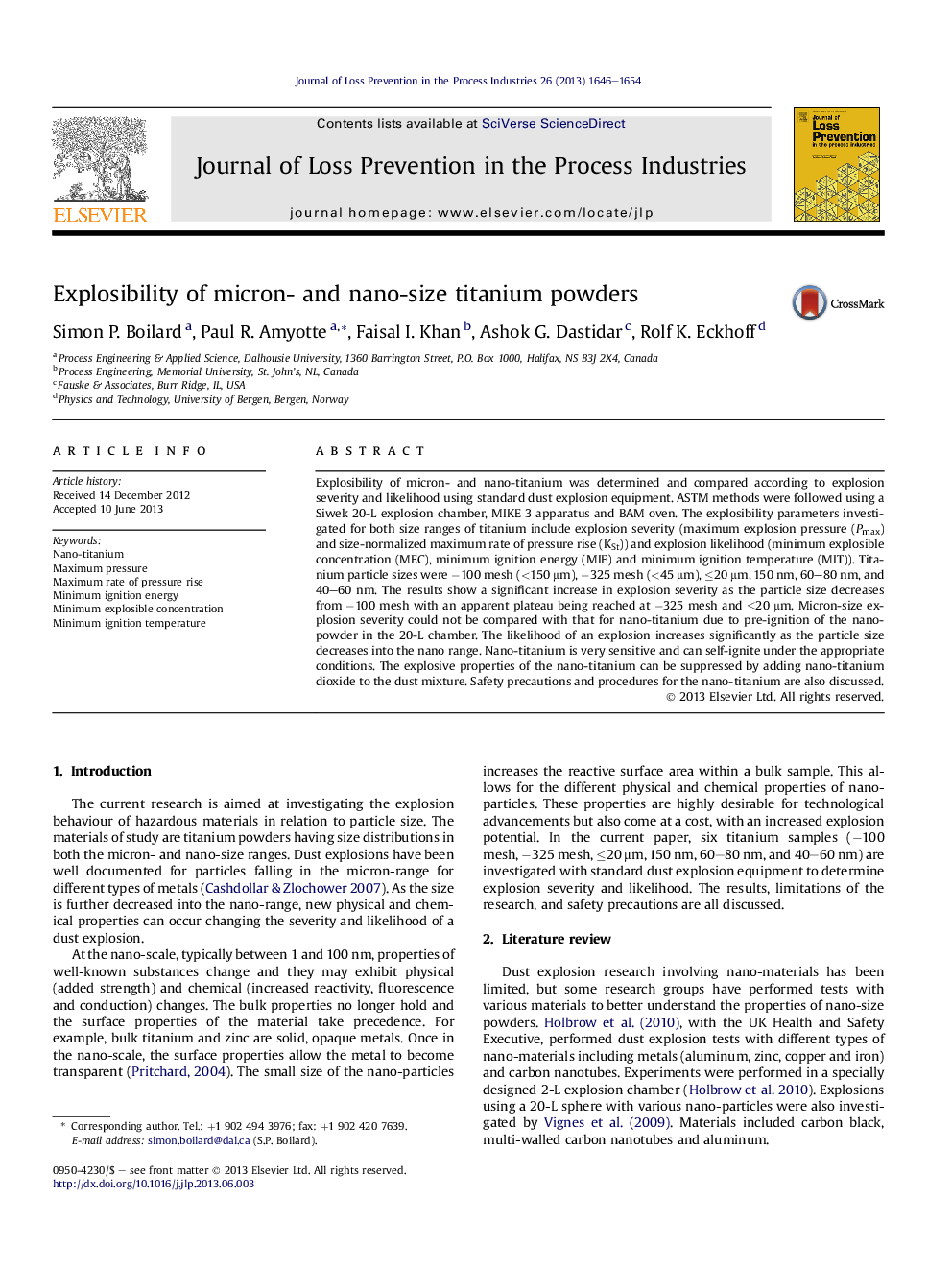| Article ID | Journal | Published Year | Pages | File Type |
|---|---|---|---|---|
| 586376 | Journal of Loss Prevention in the Process Industries | 2013 | 9 Pages |
•The results show a significant increase in explosion severity as the particle size decreases in micron size.•Micron-size explosion severity could not be compared with that for nano-titanium.•Nano-titanium is very sensitive and can self-ignite under the appropriate conditions.•The likelihood of an explosion increases as the particle size decreases into the nano range.
Explosibility of micron- and nano-titanium was determined and compared according to explosion severity and likelihood using standard dust explosion equipment. ASTM methods were followed using a Siwek 20-L explosion chamber, MIKE 3 apparatus and BAM oven. The explosibility parameters investigated for both size ranges of titanium include explosion severity (maximum explosion pressure (Pmax) and size-normalized maximum rate of pressure rise (KSt)) and explosion likelihood (minimum explosible concentration (MEC), minimum ignition energy (MIE) and minimum ignition temperature (MIT)). Titanium particle sizes were −100 mesh (<150 μm), −325 mesh (<45 μm), ≤20 μm, 150 nm, 60–80 nm, and 40–60 nm. The results show a significant increase in explosion severity as the particle size decreases from −100 mesh with an apparent plateau being reached at −325 mesh and ≤20 μm. Micron-size explosion severity could not be compared with that for nano-titanium due to pre-ignition of the nano-powder in the 20-L chamber. The likelihood of an explosion increases significantly as the particle size decreases into the nano range. Nano-titanium is very sensitive and can self-ignite under the appropriate conditions. The explosive properties of the nano-titanium can be suppressed by adding nano-titanium dioxide to the dust mixture. Safety precautions and procedures for the nano-titanium are also discussed.
